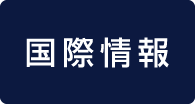ここから本文です。
Ono Village in Sotome(Hidden Christian Sites in the Nagasaki Region)
更新日:2022年6月1日 ページID:038674
A Village That Continued to Practice Their Religious Faith by Praying to Their Own Deities Enshrined in Shinto Shrines

The Significance of Ōno Village in Sotome
The village of Ōno in Sotome is one of four villages that show what sort of objects the Hidden Christians venerated as part of practicing their faith.
Under the ban on Christianity, the Hidden Christians of Ono, at least on the surface, became parishioners of the local Buddhist temples and Shinto shrines. At the same time, they continued to practice their faith by enshrining their own Christian objects of worship in the shrines.
Many Hidden Christians from this region migrated to the Gotō Islands, spreading their communities to the remote islands off Nagasaki.
When the ban on Christianity was lifted, they rejoined the Catholic Church and attended Shitsu Church in the village of Shitsu. Later, they built their own church specifically for the village of Ono, marking the end to their time of hiding.
The Three Shrines Where the Hidden Christians Prayed
According to the records, Ōno Shrine was rebuilt and the deity transferred in 1671, meaning it was the village shrine that existed throughout the period when Christianity was banned. The torii gate at the entrance dates from 1835. Of the three shrines in the village, Ōno Shrine ranks highest because it houses the guardian deity for the entire community, and the village headman traditionally acted as its shrine priest. The majority of the residents of the village were registered parishioners of the Ōno Shrine, telling us that the Hidden Christians of the village outwardly presented themselves as believers in Shinto. The Hidden Christians felt closer to the Kado Shrine and Tsuji Shrine, where they also prayed.
A range of gods were enshrined in Kado Shrine. One of them was Honda Toshimitsu, a Christian who fled to the village of Ōno at the time of the Shimabara Rebellion in 1637.
Tsuji Shrine appears in the written surveys of the Ōmura domain between 1681 and 1861. Generations of the inhabitants of Tsuji (a hamlet that existed from the time when the ban on Christianity went into effect) took care of this shrine. Based on ancient practices of nature worship, the mountain god is enshrined here, but the Hidden Christians prayed to their own god whom they superimposed on the shrine’s original deity
.
Ono Shrine

Kado Shrine

Tsuji Shrine
The Hidden-Christian Graveyard
The residents of the village of Ōno were buried in a common cemetery. Even after the ban on Christianity was lifted, however, the village headman and the local officials denied those who had openly reverted to the Catholic Church the right to be buried in the common cemetery, so a new cemetery was built at some distance from the village. Crosses, medals, and metal rosaries have been excavated there.

Kakure Kirishitan grave marked by heaped-up stones
Ōno Village in Sotome: Scope and Elements
The village of Ōno is located 3 kilometers northwest of Shitsu. It is on a steep slope that overlooks the Sumonada Sea to the west of Mt. Ōnodake.
This village has three shrines (Ōno Shrine, Kado Shrine, and Tsuji Shrine), Hidden Christian graves, and a church that symbolizes the end of the Hidden Christian period.

This English-language text was created by the Japan Tourism Agency.
お問い合わせ先
アンケート
より良いホームページにするために、ご意見をお聞かせください。コメントを書く
「2つの世界遺産があるまち」の分類
- 明治日本の産業革命遺産
- 長崎と天草地方の潜伏キリシタン関連遺産
- 世界遺産とは

















